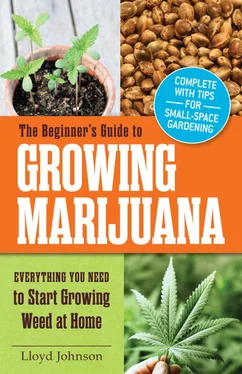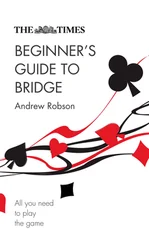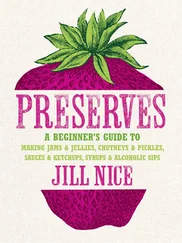If you notice earworms right before harvest or at harvest, you will be able to perform a night capture of most of the earworms left on each plant. Hang the harvested plants as you normally do, and put some light-colored tarping underneath. Periodically check, but within a few hours in the dark, the earworms start to let down from the plant, each on a long, silver individual thread. Somehow changes in the plant’s chemistry tell them the plant is dying (it has been cut down) and they need to get to the ground to pupate so they can return as the moth in the spring. This is your chance, and you must be ruthless about killing them all.
If you grow a well-balanced and organic garden with your cannabis interspersed, you will find that beneficial insects and birds are tremendously helpful. If you do find yourself with an earworm outbreak, birds are your cannabis’s best friend.
Earwigs are generally not a problem after your cannabis grows beyond the seedling stage. They can snip off very young seedlings, however, so be careful when you put seedlings outside to harden off. Make sure the area is clean of debris; earwigs hide under bark or in old plant pots or any sort of dark hiding place convenient to the plants.
A good earwig trap can be made by rolling up newspaper or using short lengths of small PVC pipe. Take a bucket of hot sudsy water with you and tap the traps into the bucket every morning.
You can protect your seedlings from earwigs by placing clean jars over the little seedlings at night. This is a little time-consuming, depending on the size of your grow, but only needs to be done for a week at most. After that the seedlings will get too big to be bothered by earwigs and your traps will have done their work.
Pill bugs are actually crustaceans. They are known for their ability to roll into a ball and are sometimes called roly-polies. They are most active at night and are only really hazardous to cannabis during the small seedling stage of the plants. A very special treat for pill bugs are monocotyledonous leaves, which are the first little leaves a seedling opens. Protect your seedlings from pill bugs as you would against earwigs; as soon as the plants are at least eight inches tall, the pill bugs will leave them alone. Pill bugs are generally useful in compost piles where they help break down dead plants and eat different fungi.
Sometimes cannabis can be attacked by aphids, a sucking insect that stings the plants. As aphids feed, they also exude a honeydew or sugary sap. The honeydew attracts ants and can also make a good environment for black sooty mold. Aphids also spread disease from sick plants to healthy plants as they feed and migrate back and forth. The best solution is to wash the aphids off the plants and buy some ladybugs. Ladybugs come in bulk through mail order, and most garden centers carry them as well.
Both slugs and snails can cut down seedlings and shred leaves of older plants. Protect your seedlings as you would for earwigs, and get rid of the pests by handpicking and destroying. This is best achieved at night when they come out to feed on your plants. Drop the slugs and/or snails into a bucket of soapy water as you pick them. A dusting of diatomaceous earth around main plant stems is a good way to keep them from getting to larger plants. Diatomaceous earth is made from fossils of freshwater organisms that have been crushed to a fine powder. The powder particles resemble bits of broken glass when observed through a microscope, and are very destructive to slugs and almost any insect, while harmless to humans and animals. Diatomaceous earth can be found at almost any garden center.
Thrips are small, flying, plant-sucking insects that are generally most damaging in greenhouses. Thrips are becoming a problem in soilless greenhouses that use rockwool and hydroponics. In old soil-floored greenhouses, a soil fungus could grow that infected and killed thrips when they dropped to the ground to pupate. Soilless grow houses have no damp soil and fungus for biocontrol. Use sticky traps to catch them on the wing, and apply insecticidal soap spray until you get them under control.
acclimatize
The physiological adaptation of a plant to changes in climate or environment, such as light, temperature, or altitude.
acidic soil
Soil with a pH value below 7.0.
aerate
Loosening packed soil to allow water and air to penetrate.
alkaline soil
Soil with a pH value above 7.0.
asexual propagation
Directed reproduction of genetically identical plants, accomplished by taking cuttings.
ballast
Regulates electrical flow; used in indoor grow systems.
blood meal
Organic fertilizer containing high nitrogen; made from dried blood from slaughterhouses.
breathing
Opening stored dried cannabis to release chlorophylls. Term used in the cannabis curing process.
bud
Slang term for a cannabis flower.
calyx
A small pod containing the male or female reproductive organs in cannabis.
chromosome
Any of the organized components of each cell that carry the plant’s individual hereditary material, or DNA.
clipping
Manicuring or removing the leaves from dried cannabis flowers.
clone
A rooted cutting from a plant, or as a verb, the asexual propagation of a plant.
cola
Slang word used for the cannabis flower.
cold frame
Unheated glass or plastic greenhouse for protection of young plants.
compost
Fully decomposed organic matter. High in valuable bacterias and nitrogen.
cotyledons
The rounded seed leaves that first appear on a plant.
crossing
Creating a hybrid by breeding two unrelated individuals.
curing
A slow process where cannabis becomes more palatable and dry enough to store without breathing the containers.
cutting
A slip taken from a parent plant for asexual propagation by cloning.
damping off
A damp-loving fungus that attacks young seedlings’ initial roots, and young clones’ stems. Also known as wire-stem or pythium wilt.
dioecious
Sexually distinct; the male and female reproductive organs occur on different individual plants. Cannabis is dioecious.
drill
A seed-planting hole, usually made by a premeasured stick.
fan leaves
The largest leaves on cannabis; primarily light gatherers.
fertilization
To unite male pollen with the female plant ovary.
fungus
An organism of the Fungi kingdom. Mold, mushrooms, and mildew are fungi.
gene pool
All gene combinations available in a population.
genotype
The specific genetic makeup of an individual plant; a combination of genes inherited from the parent plants that is unique.
germination
The seed sprouting process.
hardening off
The process of gradually acclimating greenhouse plants to the outdoors.
hashish
A strong pyschoactive made from the compressed resins of the cannabis plant.
hemp
Very fibrous, low-THC cannabis. Used for making textiles and fuel.
Читать дальше












